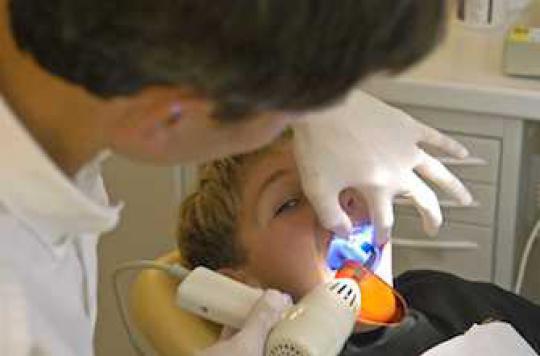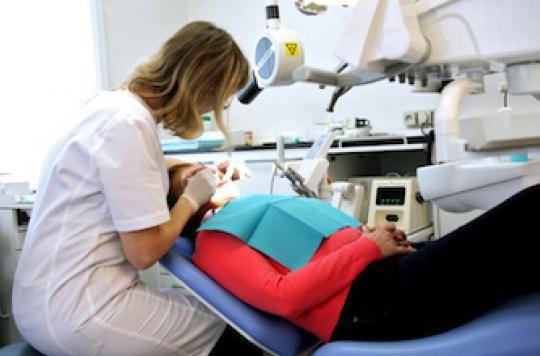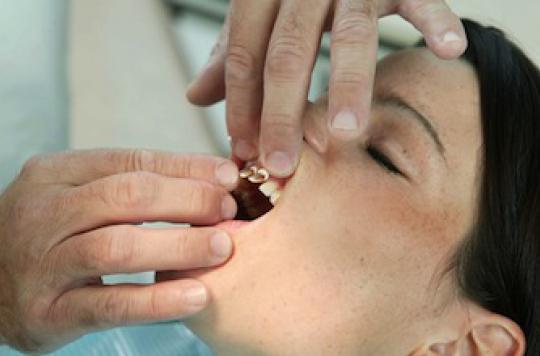Perfect teeth can have a financial cost, but also a cosmetic cost. The “invisible” alternatives to rings are increasingly preferred. But they are not suitable for everyone.

Metallic squares which obscure the smile in adolescence: a situation now common … More and more young French people are benefiting from dental equipment. But not everyone necessarily appreciates these orthodontic treatments at their true value, especially for aesthetic reasons. Metallic, ceramic, transparent “rings”, lingual appliances, transparent aligners… the invisible alternatives are multiplying. On the occasion of the 17th Orthodontic Days, which take place from November 7 to 10, why actor takes stock of the interest of different orthodontic techniques.
In 2012, according to data from the Interassociative Health Collective (CISS), 230,831 people received orthodontic care. Glued fasteners, known as “rings”, remain the benchmark. Because they cost less, but also because they make it possible to treat complex orthodontic malformations.
Is it useful to treat before 8 years?
For years, specialists believed that it was not possible to act on a deformation of the palate or a bad positioning of the tongue around 6-7 years. The times have changed. At this age, orthodontic care is possible today, but it deals more with the architecture of the mouth. “In my opinion, you should not wear a splint before 8 years old, but you can wear certain devices, fixed or removable, which will act on the skeleton, the jaw, and restore functions. When we restore all this, we do not eliminate orthondie care for adolescents but they will be less important, ”says Frédérique Aloé-Tavernier. “You don’t do the same to a 15-year-old and a 5-year-old, who is not developed in the same way. I usually say that at 5 years old, we do orthopedics, at 15 we do orthodontics, ”jokes the orthodontist.
Do transparent devices represent real progress?
The transparent gutter is more popular today than glued clips, for several reasons. “The advantage of transparent gutters is that they are less visible compared to rings placed outside, this is the aesthetic criterion”, details the Dr Frédérique Aloé-Tavernier, orthodontist contacted by why actor. The second criterion is that it is easier to brush your teeth, since the gutter is removed. The third is that there is less source of injury, there is no sharp angle, unlike with fasteners. ”
This gain in comfort does come at a price: the gutter is more expensive, which can make a difference. in view of the social security reimbursement rates. And DIn the opinion of some orthodontists, the duration of treatment is on the other hand a little longer with aligners than with rings.
|
How are orthodontic treatments taken care of? Orthodontic treatments are covered by Health Insurance, but prior agreement is necessary with the fund on which the patient depends. The reimbursement rate is 100% for one treatment per semester (6 maximum) and the first year of contention. It goes down to 70% for a monitoring session (2 maximum per semester) and the second year of contention. The fees are free and often exceed the base of the Health Insurance, although the latter recommends rates fixed “with tact and moderation.” This gap between the base and reality is regularly denounced by associations. Asked about this, the Dr Frédérique Aloé-Tavernier recognizes a complex situation: “The reimbursement rate has not changed since 1988. In my practice, I have never experienced anything else,” says the orthodontist. “It’s ridiculous compared to the evolution of techniques and the cost of living. “ The mutual can supplement what the Health Insurance does not reimburse, but not all of them allow to avoid an out-of-pocket expense. 6 semesters of reimbursement are sufficient for most cases and are separated between early care and during adolescence. But “that does not change much in complex cases, for which we have to work longer”, deplores Frédérique Aloé-Tavernier. “We do what we can if it’s for a few months… We are not going to let a patient go into the wild. We must remember that what is taken care of is a treatment: we do as many consultations, devices, reflections as necessary. ” |
What device at what age?
The transparent splint can be installed around 13-14 years old, while the lingual appliance (the rings on the inner face of the teeth, editor’s note) cannot be put in place before 15 years old. As for traditional rings, they are put on earlier and earlier, today around 10-11 years old. In the case of the splint, “you need a certain number of permanent teeth: all the incisors, the first molars, and at least four premolars,” explains Frederique Aloe-Tavernier. “It’s different from the lingual appliance, for which all the teeth have to be present. You can afford to start earlier, but this is not for a child under 12. “
What constraints for the child?
Teens who wear braces should be extra careful when brushing their teeth and avoid sticky foods at all costs. The transparent splint is a removable orthodontic treatment. This makes it easier to brush your teeth. But not all adolescents are eligible for aligner treatment. “We don’t do all the treatments with transparent aligners: some movements require ties, there are technical limitations. The standard is glued fasteners ”, recalls Frédérique Aloé-Tavernier.
For eligible adolescents, this option does come with a few constraints. “We choose the transparent gutter when there is an aesthetic request from a teenager. But you also have to be sure that the child will be serious, you need rigor, ”emphasizes Frédérique Aloé-Tavernier. “The aligner must be worn 22 hours a day, it is only removed to eat and brush your teeth. We have to explain the stakes well. “
.










